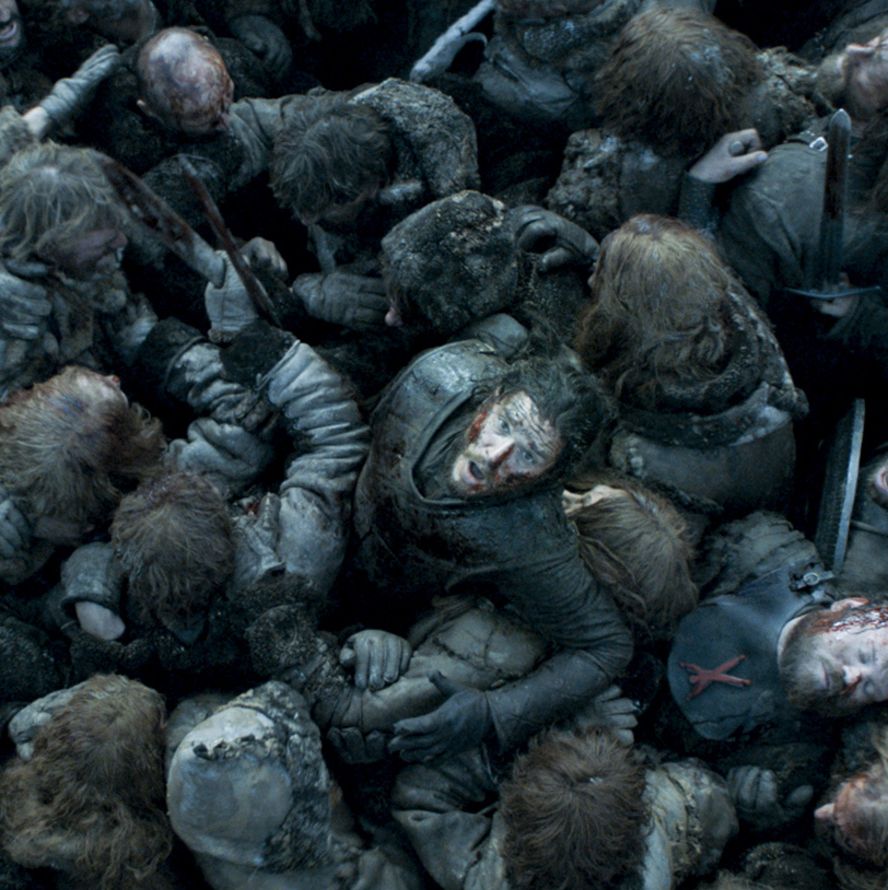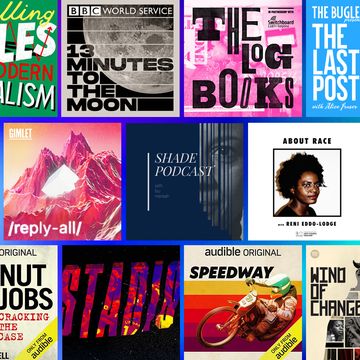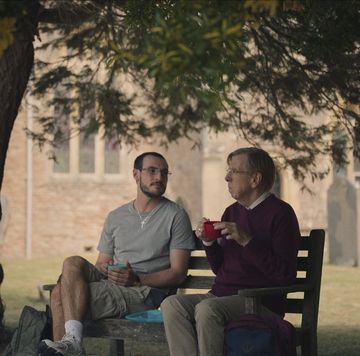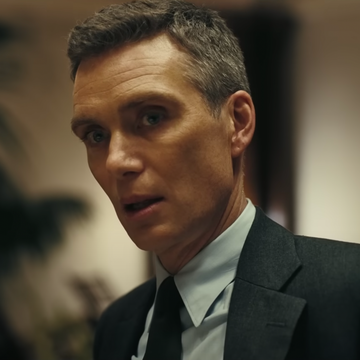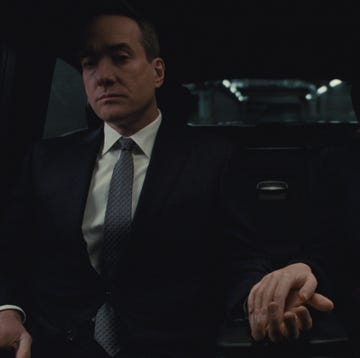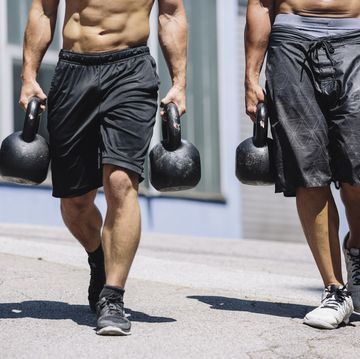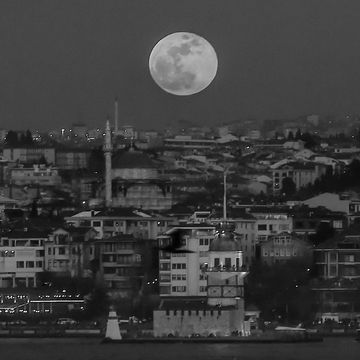To hear Kit Harington tell it, one reason for Game of Thrones’ longevity is its… longevity. He doesn’t mean that tautologically. Rather, it’s the fact that over the near ten years the show was in production, cast and crew got to know one another so well that their sheer trust and familiarity made the show that much better—much in the way that a veteran sports team or dance company learns to work together, learns how each member moves and thinks.
For Harington, one of his key collaborators was the camera operator Sean Savage, who shot most of Harington’s big action episodes, including “Battle of the Bastards.” As Harington puts it, when an audience is watching the series, “a lot of it will be through Sean’s eyes.”
I recently sat down with in New York City for a joint interview with Harington and Savage. The cameraman phoned in from London, where he has been shooting Pennyworth, a forthcoming Epix series from the creators of Gotham that tells the backstory of Batman’s butler, Alfred.
Kit Harington: You know, Sean was on Thrones from day dot, same as me.
Sean Savage: It’s phenomenal, isn’t it? None of us knew. I had obviously been in the business almost 25 years more than you, I suppose, but none of us knew where it would go after the first season. We have to give credit to our creators, don’t we, who created such a stable base. We hardly had any changes in our cast and crew, did we? Prop boys, designers, costume designers— everyone. It was a tough location, it was a tough gig, but there’s that slightly brief state of masochistic desire to stand in mud all day and be the toughest guys to do it.
Bruce Handy: I know one relatively early sequence you two are particularly proud of was a 360 degree shot during the battle of Castle Black, near the end of season four. Tell me about setting that up.
Savage: Well Castle Black was an incredibly impressive set. It’s not massive, but it had a central courtyard. And it was approximately, like 90 foot by 90 foot. So one of our good directors, Neil Marshall, worked this out. We always had a telescopic crane with us and Neil devised the shot for when the battle was at its peak. So Kit came down in the elevator at 12 o’clock, or such, and then the crane arm actually came off Kit quite quickly, didn’t it? We had about 50 or 60 stuntmen. They allocated one stuntman to an area of about two extras, and they created their own little fights everywhere. And then we put the five or six main cast members into that battle. And Neil reckoned if you put the crane in the middle, you can do a 360, and I think we went in and out about four times [with the telescoping crane arm].
Harington: I remember us rehearsing that. We’d set aside a whole night, if not longer [for shooting it], and we thought we’d never get it. And then we got it in one take and everybody looked at each other like, what do we do now?
Savage: We did it about six times, but that was just for choice. It was unbelievable. Because we knew each other so well, I don’t think we even had a doubt about [getting the shot]. I know that sounds slightly arrogant, but we didn’t.
Harington: I think it was that self-belief we all got in the middle of the [series’ run] which sort of made us do stuff like that. In some ways, it was kind of foolhardy. But with the show doing so well by then, you get this kind of self-belief and arrogance that pushes you, as a crew.
Savage: But we were patient, too. And then [in Season Five] Miguel, this genius turned up. Miguel Sapochnik [who directed “Hardhome,” “Battle of the Bastards,” and other episodes with big action scenes]. He had the vision to create some extraordinary sequences. But I would attribute some of our understanding and friendship to the fact that we—it’s a career of trust, isn’t it?
Harington: Yeah, it’s trust. Everyone talks in film, especially, about their relationship with the director, or their relationship with the creators or writer. What I found with Sean, because he was on the show from the start, and we were there together, is that you develop a shorthand with the lead cameraman that goes almost a bit beyond the director. It was not like you were going above what the director was saying, but Sean would could come up to me and say, “Look, if you do this, that will work.” Sean could get me to do something quicker than some of the newer directors on there.
Can you give me an example?
Savage: Well. Miguel is just about one of the best directors I’ve ever worked with. And he had an idea in Battle of the Bastards about Jon Snow being trampled and suffocated [by his own men as the army is surrounded by a narrowing wall of enemies] with a sort of water imagery, you know, like you’re almost underwater. But when we did the sequence when Kit hits the ground, it wasn’t working. There was no jeopardy in it, ‘cause the stuntmen were trying to look after Kit, and Kit’s a really tough guy, he’s gone through so much. [Laughs.] I knew he could do it, so we basically just devised a shot where I straddled him with a lightweight handheld camera. He’s on the ground. It sounds a bit wanky, but we got six or seven stuntmen to fall onto Kit, three of which were on top of me, and I was like, “Give him no quarter. Don’t worry about me I can handle this.” I mean, I’m like 6’1” and 16 stone [224 pounds]. And if you remember, Kit, I literally was screaming at you to get up, wasn’t I?
Harington: [Laughs.] Yeah, yeah, yeah.
Savage: But I said to the stuntmen, “Don’t let him get up. Don’t make it a film. Don’t make it orchestrated. Don’t let him get up.” You’ve got to believe this man is going to fight for his life. Miguel directed that sequence beautifully—but that’s where I think you and I really clicked. And I would say very bad words—which I won’t repeat now—but telling Kit to get off the floor and abusing his manhood and saying, you know, “What are you? Get up.”
Harington: [Laughs.] Yeah. I think that’s a perfect example of that kind of trust.
Savage: The funny thing was we had a, sort of, safe word. Which as I seemed to remember was—well, there was an episode in Family Guy where their safe word is “banana,” which I thought we might as well go for.
Tell me about the extended shot in Battle of the Bastards where the camera is following Jon as he’s weaving through this close combat and ducking swords and dodging a whole flock of arrows and horses are leaping all over the place. How do you rehearse and shoot something like that?
Savage: That was done in three parts. So it’s made to look like a single shot. Purely hand-held. Kit and I and the crew, we shot that in a day and a half. But the horses and stuntmen had been rehearsing for about two weeks, hadn’t they, Kit?
Harington: Yeah. I remember there was a lot of rehearsal for that, but then what happens is, you rehearse it in the stunt tent and then you get out there [on the location] and it all changes because you’ve got certain elements which change, and you’ve just got to be ready for that. Sean has to be and I have to be. But I love those “one-er” shots because I don’t like it when, in fights, you cut away frantically. When Sean’s behind you, constantly following, it gives you the chance to every now and again sell the emotions. I used to love those. And it only took a few walkthroughs. The really major elements were the horses--and missing the horses. But I always had Rowley [Irlam, head stuntman] on my back ready to flatten me if I was getting too close to the horse.
Savage: Enormous amount of trust there, wasn’t it, between you, me, and Rowley. And also, Kit’s became a very good swordsman, and I have watched a lot of those sort of movies in my life, and this may sound a bit technical, but a sword’s about three foot long and a guy’s arms are over two foot long--let’s say two and a half foot. So if I’m never going to get hit by a sword while I’m holding a camera, I’ve got to be six foot away. Now I have this theory that if I’m six foot away, it reduces the jeopardy immediately. Because I’m in a safe zone, therefore the audience are going to go, “They’re not [in genuine danger].” So when we were doing handheld battles with me and Kit where he’s fighting a guy, if I knew the sequence, I would step into that safe zone. I would step, like, two foot away from him, knowing that he’s going to swing the sword over my head. And I’ve since had the satisfaction of seeing audience reactions to some of our fights, when they actually put the camera on the audience and people duck when the sword comes. Which is “job done” for me.
Harington: But I think that that’s key to what helped Thrones be special in that way. If Sean and me, or whichever actor and Sean, have that long-running understanding with each other, it’s just completely different from coming into a movie for two months and knowing the cameraman for those two months. When we get to the Battle of the Bastards, I’ve known you six years. And I’ve developed my sword fighting during those six years, and you’ve developed your relationship with me and learned how close you can get, which just means that we can take that bit more trust, that we know each other that bit more, which I think adds to the whole experience of Thrones quite heavily.
Savage: And the attrition--the attrition, physically, was extraordinary. Especially on Kit, because he’s actually fighting, and on myself and the crew. I don’t want to exaggerate, but there were shots where we’d run 30 yards together and we’d get the shot but in so doing we’d land in the mud, you know, and we’re sort of sitting there looking at each other. Then it’s pick ourselves up and go again, you know? It was that physical. And that’s why it doesn’t look like some, you know, glossy, medieval, Hollywood thing. That’s why it looks like it does, I think.
